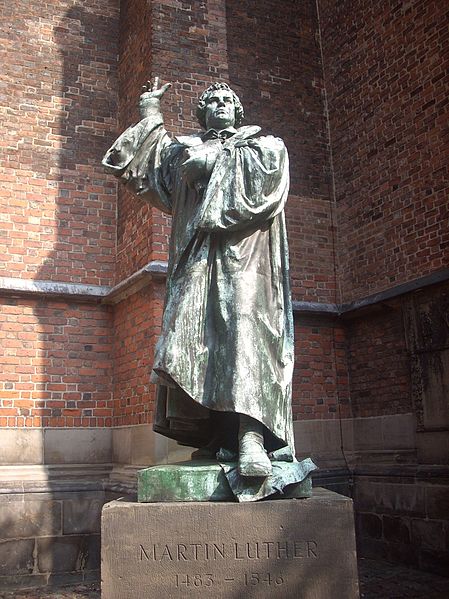By Prof. Plinio Corrêa de Oliveira
In general lines, I formulated five essential theses in these lectures on egalitarianism in such a way that we understand that each one of these theses constitutes a point entirely distinct from the others and has its own demonstration. The ensemble of these theses constitutes our doctrine on egalitarianism.
First Thesis: The Triumphal March of the Egalitarian Revolution
“The most important fact of our days is an immense egalitarian Revolution which directs the course of all events to its advantage, aiming for complete equality through processes which are at times gradual and peaceful, and at other times open and brutal.”
For many people, this thesis is something new. They have a confused, inexact notion of this Revolution.* We must know how to show that this Revolution displays seemingly disconnected facts which in fact constitute a single whole. We are not dealing with only slight accidental modifications in life, but with an immense movement which has been going on for centuries and will necessarily lead to complete equality. This is done through violent processes, but also through gradual ones. This is the first thing we must do to have people understand the importance of the power of egalitarianism. This would be an introduction and at the same time an affirmation of our theses in this matter.

Statue of Martin Luther in Germany outside the Marktkirche. Luther is stepping on the Papal Bull of his own excommunication.
Second Thesis: The Religious Character of the Egalitarian Revolution
“This Revolution is religious, in the sense that it has its own mysticism: Equality, hoisted as the supreme metaphysical value in relation to which all beings should be ordered if they wish to be perfect.”
This principle affirms that equality is a kind of mysticism that comprises enthusiasm, supreme admiration, and a conviction that all things are perfect only in the measure they are equal. Equality is the measure of all things. Now, this attitude facing the problem of equality gives the Revolution a religious character, as it assumes a religious principle as absolute and supreme. This is not to say that egalitarianism is a religion in the sense of having its own god and worship, but that it is a religious Revolution.
The affirmation that this is a religious Revolution is very important to explain the incompatibility between this Revolution and the Catholic Faith. This is because many people still have a remnant of common sense by which they recognize that two religions are not compatible with each other. So placing this in terms of religion is precisely what we must do. On the other hand, we also have an argument to pressure those who subconsciously think: “Since this is not a religious issue but only a political and social one, it is not very important. Yes, we should fight against Protestantism. . . [and other false religions], but this [egalitarianism] is not a religion and so it is not that important.”
Third Thesis: The Egalitarian Revolution’s Hatred of God
“This religious-mystical-metaphysical ideal is directed against the image of God in Creation and, therefore, against God Himself.”
This is what we affirm when we show that God created the universe unequal so that it might reflect His perfections. Therefore, we should want a universe in which all creatures are perfect only when unequal, as God made them unequal to better mirror His perfections. Given St. Thomas Aquinas’s thesis that the divine perfections are better mirrored in the inequality of creatures, we arrive at the conclusion that this Revolution is directed against the reflection of God in creation; and if it is done to counter that which most mirrors God in creation, it obviously is a Revolution against God.
Therefore, there is a curious combination in this Revolution; it has something secularist and atheistic about it. As paradoxical as this may be, it is a religion with secularist and atheist traits.
Fourth Thesis: The Revolution Has a Gnostic Ideal
“This ideal is Gnostic, for it seeks to reabsorb creation into the primitive nothingness. It is thus the synthesis of all heresies, towards which they all tend.”
Having prepared the ground, we now state our thesis on Gnosis. We prove the affirmation that it is the erroneous religion par excellence, the pole towards which all erroneous religions are directed. St. Pius X employed the expression “synthesis of all heresies” to describe Modernism, which, as we know, is Gnostic. The god of this religion is nothingness, the initial abyss from which all things came. Thus one understands that since the god of this religion is nothingness and not a personal god, it has the traits of an atheistic religion. This is the pole toward which all heresies tend, and it is the greatest enemy of the Catholic Church.
Fifth Thesis: The Revolution Is Satanic
“This Revolution is satanic. It is the devil’s deceitful and failed plan to combat the plan of Providence.”
These Five Theses Are Intertwined
The charge against the egalitarian movement is done in the following manner. In the first thesis, we show that this movement exists. We draw, with countless examples drawn from the cosmopolitan society of our days, the proof that there is a constant march toward equality in the contemporary world. Then, comparing our days with a more remote past, we show that this movement comes from way back, having started many centuries ago; it dominates all of today’s developments; it is very radical and will lead to complete equality by means of gradual, obscure processes, etc. This is the first description of the Revolution.
The other four theses constitute the judgment of the Revolution, and this judgment is done in successive points:
1) It is a religious movement;
2) Animated by hatred for God:
3) It is Gnostic, and at the same time a kind of atheistic religion;
4) It is done by the devil.
(. . . )

Historians note that atheism, even in the guise of deism, had become widespread at that time in high society in France and elsewhere; belief in a God who was Creator and Redeemer had become, in that world given over to all the pleasures of the senses, something almost ridiculous and unseemly for cultivated minds avid for novelty and progress.
Summary of Each Thesis
I gave a name to each of these principles or theses.
1) The triumphal march of the egalitarian Revolution. Here we affirm its existence, and the fact that is heading toward victory.
2) The religious character of the egalitarian Revolution. Here, the religious character should be distinguished from the Gnostic or satanic character. It is religious insofar as it is mystical and metaphysical.
3) The essence of this religion is the hatred of God.
4) The god of this religion is the abyss, or nothingness. In my opinion, one of the most intriguing characteristics of communism is its atheist and godless character, and at the same time, its religious tone. Many people who are confounded about this fail to remember that the Gnostics adore a non-god, an empty god.
5) The god of the abyss is the devil – the satanic character of the egalitarian Revolution.
* The word Revolution is used here in the sense given it by Prof. Plinio Corrêa de Oliveira in his book, Revolution and Counter-Revolution.














